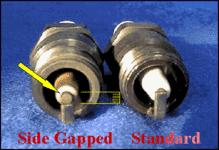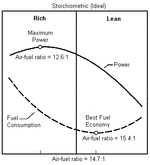SmokinBBC
Well-known member
Grumpy has been busy and has me thinking again. A couple of guys I know run side gapped plugs but no "proof" that they get better performance...no dyno.
Anyhow, I use ACDelco R43T for my BB. Good old reliable. They are still under $2 a plug.
Any of you guys side gapping? Just how do you side gap? I read in Grumpy's article that you straiten the arm, cut with dremel and then bend back. What gap do you then put on the arm? .035? This right?
I normally change plugs once a year whether they need it or not. So spending 16bucks is no big deal if I screw them up. I think I'll give it a shot before I start messing with my carb settings to see if I can get any more performance.
Anyhow, I use ACDelco R43T for my BB. Good old reliable. They are still under $2 a plug.
Any of you guys side gapping? Just how do you side gap? I read in Grumpy's article that you straiten the arm, cut with dremel and then bend back. What gap do you then put on the arm? .035? This right?
I normally change plugs once a year whether they need it or not. So spending 16bucks is no big deal if I screw them up. I think I'll give it a shot before I start messing with my carb settings to see if I can get any more performance.



